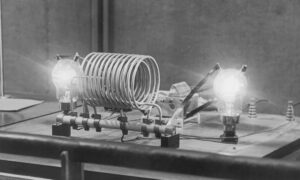Pipe bending is among the primary machining processes that can sometimes be taken for granted even within the industry. After each pipe is fabricated, it is typically subjected to post-fabrication processes that form it into a usable product. Bending is one of the most commonly used procedures for achieving this effect.
Pipe bending is used in various processes for shaping metal and its goal is to ultimately increase plumbing fixtures’ fabrication capabilities. It can be performed both manually or with the use of computer-controlled machines and with the application of either hot or cold pressure. The result can vary largely since the pipe can be bent in numerous directions and at different angles.
If you want to start bending pipes, you should first take a good look at the pipes you will be using. Because of their alternating properties, the process can be tricky – but luckily, a bending company should be familiar with the ins and outs of the procedures. Below we’ll take a look at the different variations in pipe bending methods.

Photo by Crystal Kwok
Pipe Bending Basics
Pipe bending starts with placing a pipe into a machine and securing it into place between two different dies – the forming die and the clamping block. There are two other dies that support the piece itself – the pressure die and wiper die. Mechanical force is applied to push the pipe against a die, forcing the pipe to adjust to the die’s shape.
When bending pipes, you need to define the exact centerline radius, the external diameter, and the thickness of the material’s wall. This will ultimately help you minimize breakage and ensure a high quality of the end product. Pipe bending machines can require human force, hydraulic power, pneumatic power, or run with an electric servomotor.
Types of Bending
Ram-Type
Ram-type bending is one of the simplest bending methods. It is performed by forcing a piece of pipe between two pivots or rollers with a hydraulically driven ham. Due to the large amount of force used in ram-type bending, the method is more suitable for square tubing applications as it compresses and alters the shape of the inside bend radius. It is most commonly seen in muffler shops.
Compression
This method is somewhat similar to ram-type bending in that a metal piece is bent around a stationary bend die. It is commonly used on workpieces that need symmetrical bends, which are produced by a machine with two bending heads. For this reason, compression bending is often used for household products like towel racks or door hinges where multiple symmetrical bends are required.
Roll
Roll bending is primarily applied to large-size workpieces used in construction. Typically, rollers are placed in a pyramid-shaped configuration either horizontally or vertically. A piece of pipe is then pushed in between the rollers as they force the pipe into a specific bend with a designated radius. Most professionals that use roll bending apply it to spirals since the tubes can be lifted at each turn on a tube to make a coil.
Rotary Draw
This process is among the most advanced types of pipe bending and is primarily applied on pieces that require a high level of precision. This is accomplished with rotary draw benders that hold the straight section of the pipe with a pressure die while rotating it with a round bend die. The interior of the pipe is supported with a mandrel while a wiper die prevents the inside of the radius from forming wrinkles.

Photo from The Fabricator
Pipe Bending Tools
Once you have the proper pipes and knowledge of different bending processes, you need to find the right tools that will help you perform the techniques. There is a wide range of tools to choose from, but whichever one you select, you should make sure the machine has multiple axes of control.
Generally, the different types of pipe bending discussed above require a corresponding machine. One tool that can especially make the manual pipe bending process easier and more convenient is the pipe bender. This tool can help you bend the pipe at the right angle, which can otherwise be left to eyeballing and estimation.
Final Words
Pipe bending is a metal forming process used for shaping varying types of pipes. It is vital and excessively used across industries – from automotive to aviation. When going through the process, it’s crucial to pay attention to the type of pipe and the end-product requirements to ensure you are applying the right tools and techniques.
Generally, the four types of pipe bending are ram-type bending, compression bending, roll bending, and rotary draw bending. Although they follow a similar procedure, they have different applications and use specific machines based on the material and specifications of the pipe.


































